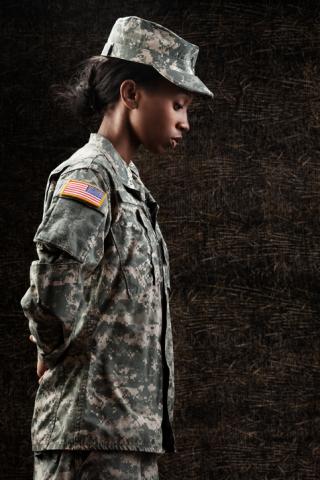
As the wife of a former U.S. Naval Aviator who flew jets over Iraq and was shot at with surface to air missiles, I understand the trauma of combat. Before he deployed, I asked my husband to write letters to our daughters in case he didn’t make it back. He thought I was being morbid – until the first missile nearly missed his jet. He went back to his stateroom that night and promptly wrote the letters. Thankfully, they never had to be delivered.
Our country has asked so much of our men and women in uniform. The trauma suffered even by those who survive their deployments is indescribable– especially for our ground troops who have witnessed bloodshed and endured the constant fear of IEDs and sniper fire. Returning troops suffer from a whole host of mental health issues: Post-Traumatic Stress Disorder, depression, survivor’s guilt, sometimes self-blame for mission failure and many have suffered traumatic brain injuries. It is no wonder that veterans’ suicide is on the rise. In fact, more veterans have died by their own hands than from enemy fire in both the Iraq and Afghanistan wars combined.
22 veterans kill themselves every day. And most do so with a gun. According to the Veteran’s Administration, 66 percent of veteran suicides are with a gun. Access to firearms and knowing how to use them undoubtedly contributes to the problem. This is particularly true when it comes to female veterans. According to the VA, female veterans are 33 percent more likely to use a gun in suicide than civilian women.
The decision to end one’s life is often spontaneous and guns make it all too easy to give in to that impulse. The availability of a gun can turn a temporary crisis into a lasting loss-- which is why firearms are the deadliest form of suicide. Most people who use other methods in suicide attempts survive.
While there is no clear consensus on how to address the myriad mental-health issues that lead veterans to suicide, there is consensus on how to prevent it: limit their access to firearms. By temporarily removing guns from individuals in crisis, lives can be saved. Unfortunately, in most parts of the country, it is not possible to force someone to give up their firearms even if you know them to be of danger to themselves or others. Efforts are underway in some states to enact legislation that would provide for “Extreme Risk Protective Orders” to give law enforcement and family members the ability to temporarily remove firearms from those in crisis but the gun lobby is fighting hard against these very sensible and potentially life-saving policy efforts.
Until Congress or our state legislators take action, it is up to all of us to educate those we care about. If you know a veteran who is in crisis, encourage them to let you or someone else hold their guns for safekeeping. Come up with a plan together for milestones which must be reached before you will return the firearms and make sure that one of those milestones is confirmation from an attending physician, psychologist or psychiatrist that it is safe to do so. Our veterans have sacrificed so much to protect us. The least we can do is to help protect them.



The views and opinions expressed in this post are those of the author(s) and do not necessarily reflect those of MomsRising.org.
MomsRising.org strongly encourages our readers to post comments in response to blog posts. We value diversity of opinions and perspectives. Our goals for this space are to be educational, thought-provoking, and respectful. So we actively moderate comments and we reserve the right to edit or remove comments that undermine these goals. Thanks!